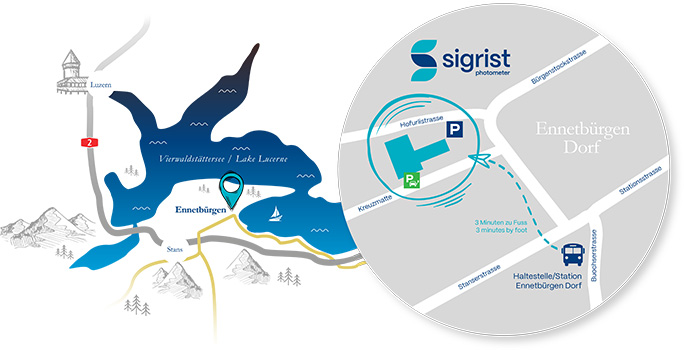The scatter angle is the angle between the scatter direction observed and the outlet axis of the transmitted light:

Fig. 42: Scatter angle
The polar diagram in the following Figure shows how the intensity of scatter varies as a function of the angle for two particle diameters:

Fig. 43: Scattered light intensity (relative unit) as a function of angle for polydisperse suspensions of SiO2 /p> in water. The total mass concentration is the same in both cases. Wavelength: 550 nm
As the diagram shows, very small particles scatter the light in all directions with about the same intensity. With increasing particle diameter, the scatter intensity increases generally and becomes lopsided, i.e. perceptibly greater at smaller angles.
This phenomenon is exploited by the designers of turbidimeters to improve their sensitivity: the smaller the measurement angle, the greater the amount of available light. But this relation is limited by the occurrence of stray light, which increases sharply close to the transmitted light.
By measuring the scattered light at two different angles (such as 90° and 25°), one can obtain a ratio to deduce the particle size. A practical application of such dual-angle measurement is the monitoring of beer filtration.


